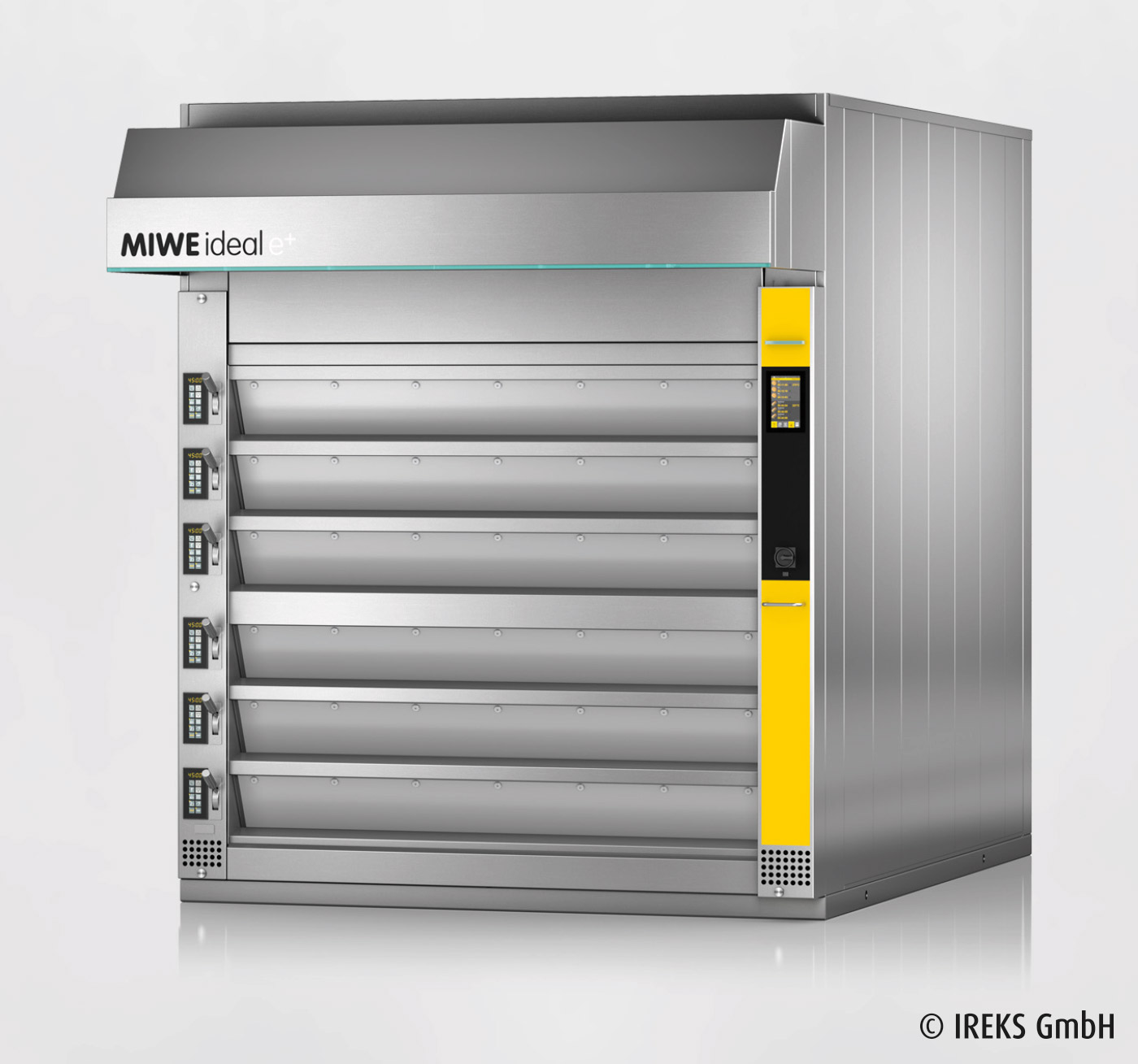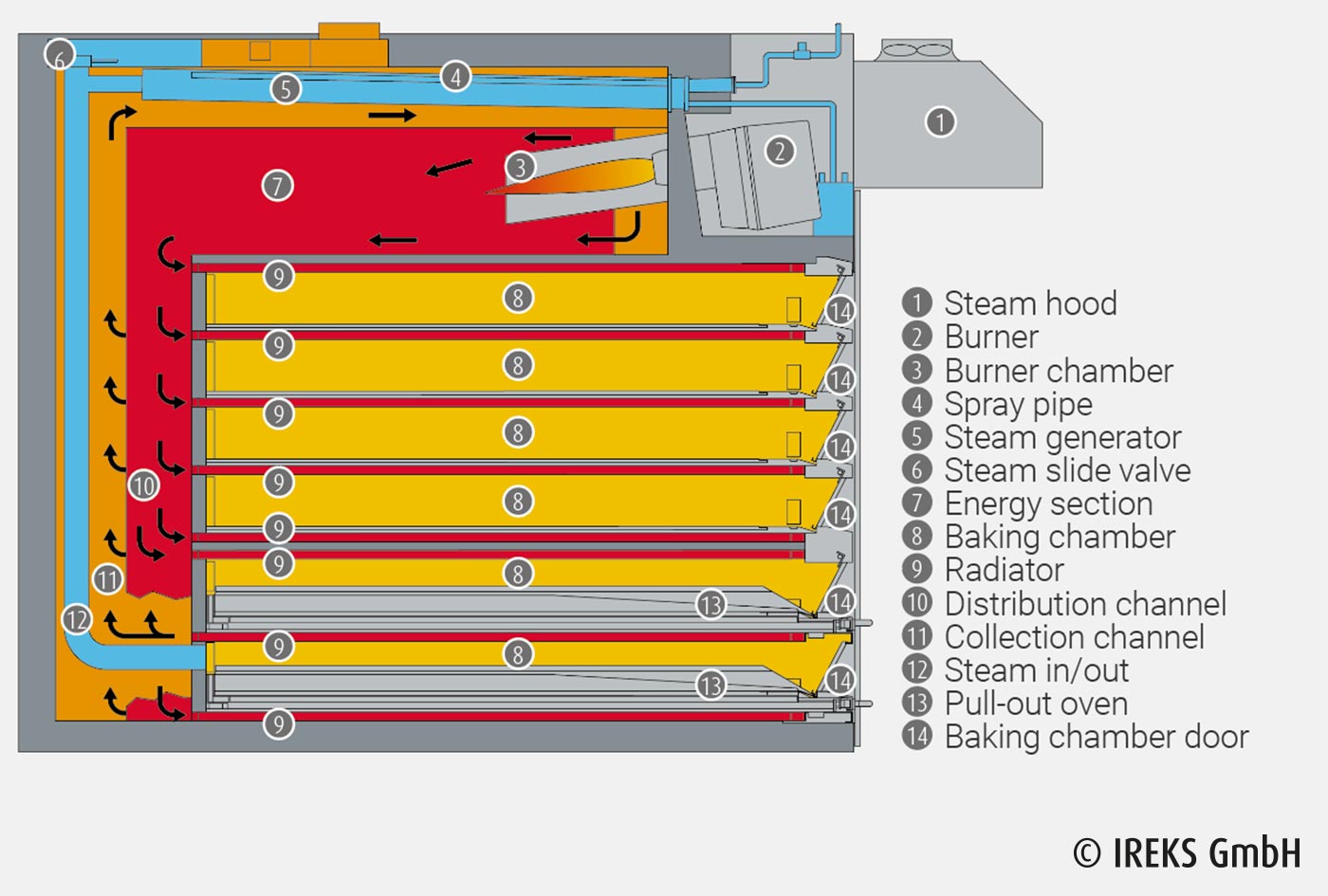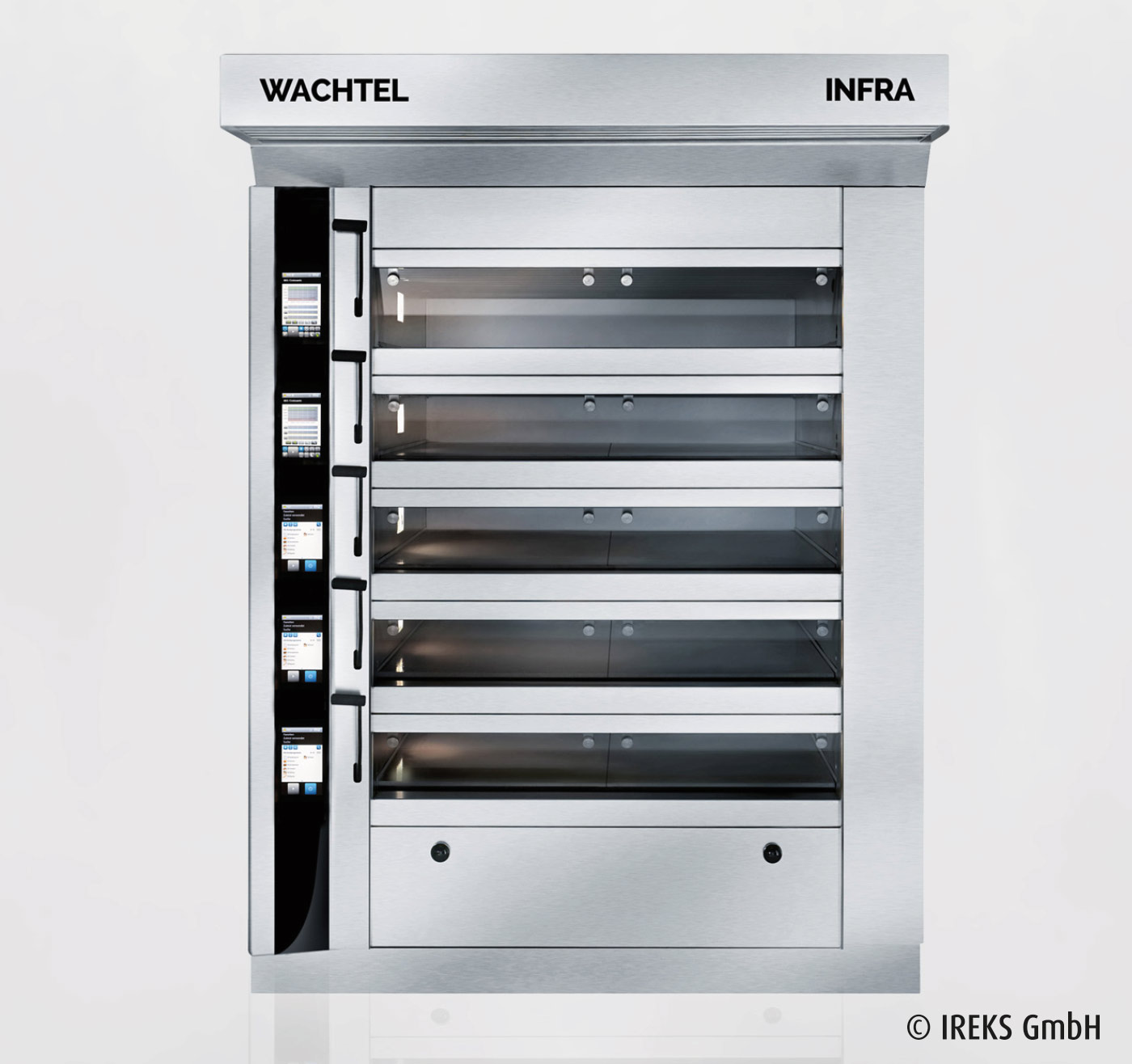The deck oven fulfils many requirements which are met in a modern bakery. It consists of several baking ovens lying above one another. Predominantly baked goods with a high scaling weight (bread) are baked in a deck oven.
Deck ovens are available as different models. A distinction can be made according to the number and size of the baking ovens, the loading technology, the heating medium and the mode of heating. In the case of indirect heating, oil, gas and electricity are used, in the case of direct heating, wood or wood pellets.
Electrically heated ovens have the advantage that the temperature of the individual decks can be controlled separately. In this way, baked goods with various temperatures can be baked at the same time in the individual decks (e.g. tray cakes at 200° C and mixed rye bread at 260° C). Moreover, the top heat and the bottom heat of the ovens can be adjusted separately.
Ovens heated using oil and gas are less flexible as regards the setting of temperature, but nowadays generally have a central group oven control. This makes it possible to control groups of deck ovens with different temperatures. The advantage of gas and oil as a heating medium is the lower operating costs in comparison to electricity.
While in small craft bakeries deck ovens are loaded by hand with the aid of setters, in larger bakeries, automatic loading and unloading installations are used.
Another model of the deck oven is the reversing oven which, in comparison to the conventional deck oven, has movable belt systems instead of the fitted fixed decks. Loading the dough pieces takes place by means of special loading equipment with the help of which the finished baked goods can be unloaded again at the same place.



